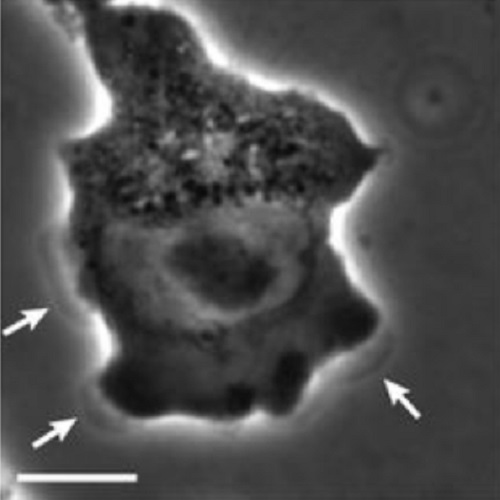Cell mechanics control rapid transitions between blebs and lamellipodia during migration.
Protrusion formation is an essential step during cell migration. Cells migrating in three-dimensional environments and in vivo can form a wide variety of protrusion types, including actin polymerization-driven lamellipodia, and contractility-driven blebs. The ability to switch between different protrusions has been proposed to facilitate motility in complex environments and to promote cancer dissemination. However, plasticity in protrusion formation has so far mostly been investigated in the context of transitions between amoeboid and mesenchymal migration modes, which involve substantial changes in overall cell morphology. As a result, the minimal requirements of transitions between blebs and lamellipodia, as well as the time scales on which they occur, remain unknown. To address these questions, we investigated protrusion switching during cell migration at the single cell level. Using cells that can be induced to form either blebs or lamellipodia, we systematically assessed the mechanical requirements, as well as the dynamics, of switching between protrusion types. We demonstrate that shifting the balance between actin protrusivity and actomyosin contractility leads to immediate transitions between blebs and lamellipodia in migrating cells. Switching occurred without changes in global cell shape, polarity, or cell adhesion. Furthermore, rapid transitions between blebs and lamellipodia could also be triggered upon changes in substrate adhesion during migration on micropatterned surfaces. Together, our data reveal that the type of protrusion formed by migrating cells can be dynamically controlled independently of overall cell morphology, suggesting that protrusion formation is an autonomous module in the regulatory network that controls the plasticity of cell migration.

- Proc. Natl. Acad. Sci. U.S.A. 2012 Sep 4;109(36):14434-9
- 2012
- Cell Biology
- 22786929
- PubMed
Enabled by:
